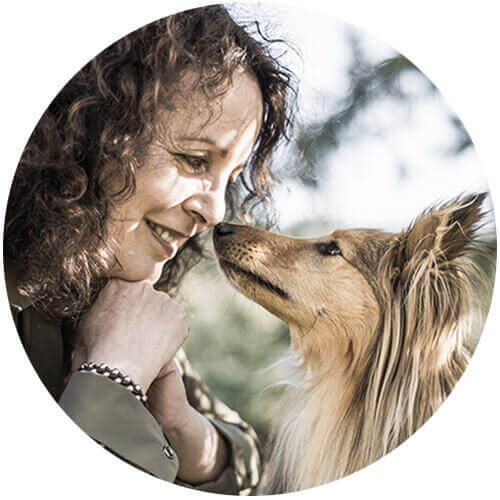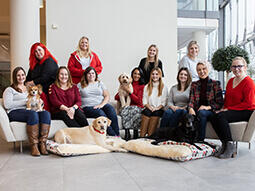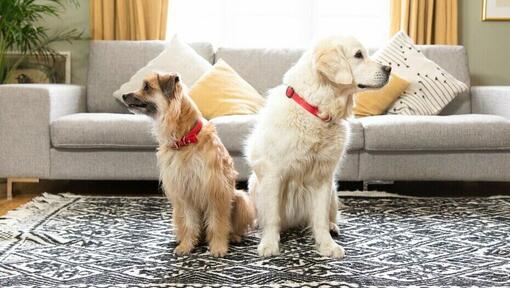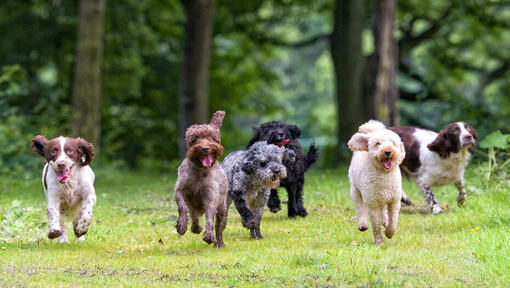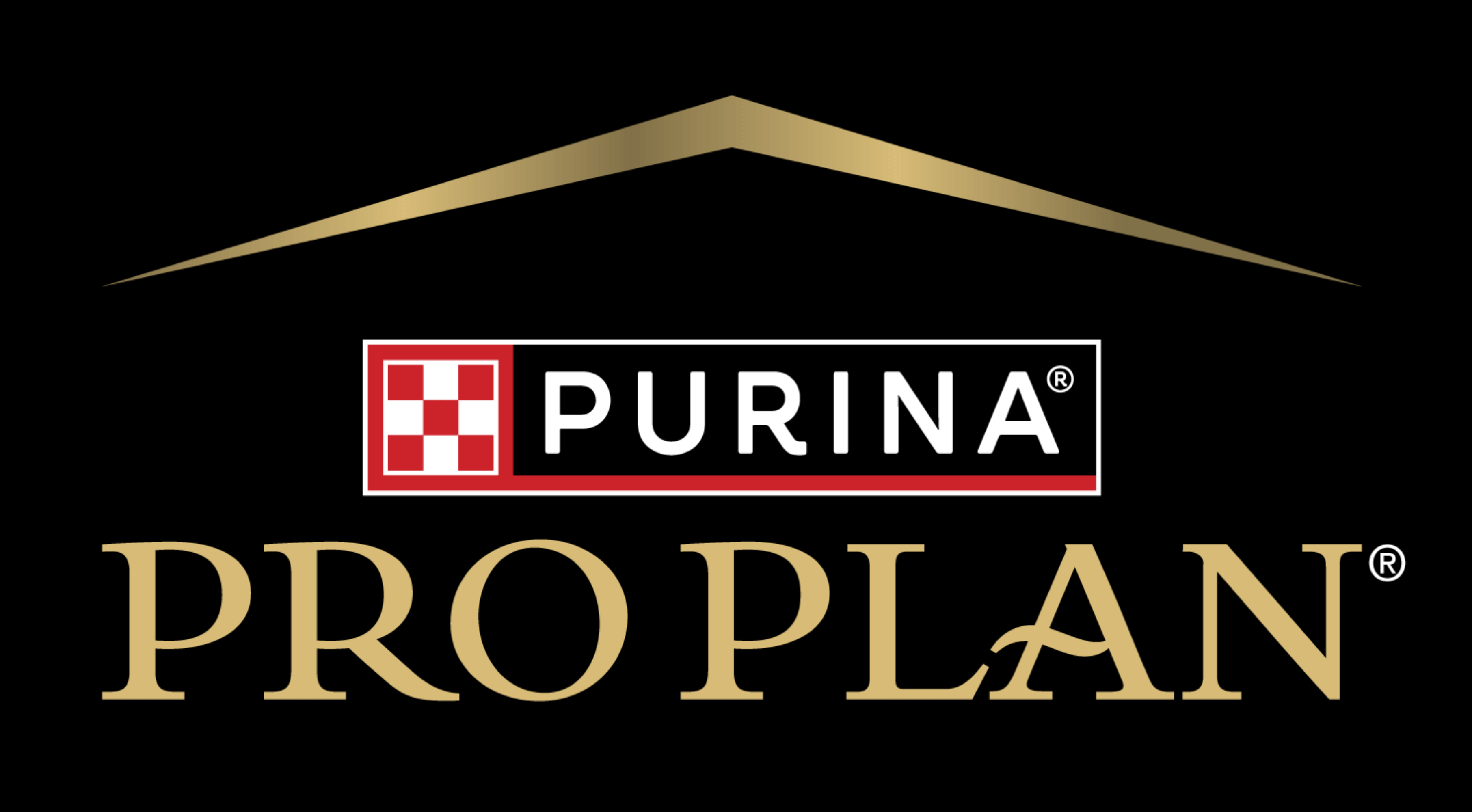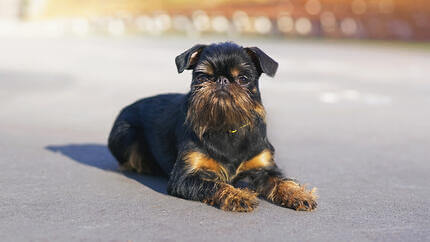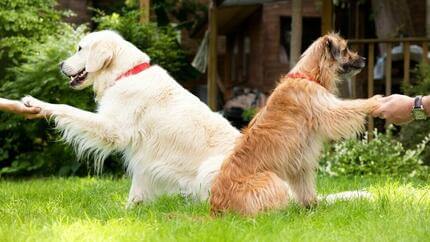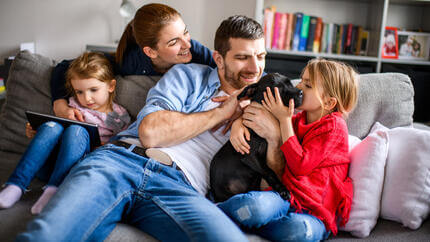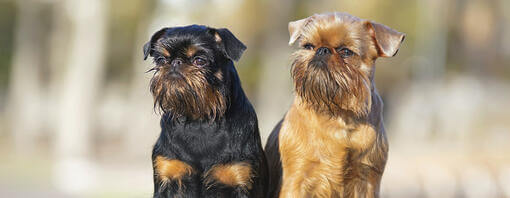
Just as feeding your dog the right diet is vital to helping them to stay healthy and energetic, giving them the emotional nourishment they need is vital to helping them to stay happy!
Introduction to dog types
With many registered dog breeds in the region and a whole host of other crossbreeds and types, choosing your perfect canine companion might seem a bit daunting at first. Different types of dogs have different needs. If you have a Terrier, for example, he will love digging, whereas a Scenthound would prefer to follow a trail to a hidden stash! A Livestock Protection dog may be happy on his own for long periods of time, but a Toy Dog needs lots more attention from you to feel content.
So getting to know your dog's personality and behavioural needs is vital to keep them as happy as possible.
Why are there so many different types of dogs?
If you travel around the world and look at village dog populations, you will see far more similarities than differences. Left to its own devices, the domestic dog is pretty similar no matter what country they come from. They are medium-sized, smoothish-coated, of various shades of brown with tulip shaped ears and a tail with a white tip (for easy communication) that is often held over their back. They may be slightly smaller in hot climates and larger with more coat in cold climates but basically, they are all very similar. They live alongside the human population but do not have a relationship with them.
By contrast, when you look at the types of dogs we live with today, there couldn't be a wider variety in terms of size, shape, coat-type and personality.
This is why if we want to understand our dogs, we need to know a little bit about how the companion dog has changed in the 15,000 years they have been living and working alongside humans.
How did different dog types evolve?
Put simply, dogs began to recognise that humans could provide food for them, while humans realised that some types of dogs were really good at certain jobs. Humans living alongside dogs was beneficial to both and so our ancestors began to selectively breed these dogs with those jobs in mind. At the same time, dogs evolved to succeed in the ever-changing environment in which they were living.
Dogs could do the jobs our ancestors needed them to do by using the skills they already had from the natural hardwired hunting/foraging and scavenging behaviours that allowed them to catch their food - so by amplifying or eliminating key parts of these behaviours with successive breeding, our ancestors created dogs that could help them with key tasks.
Different types of dogs for different jobs
Early humans didn't care what these dogs looked like, just that they could do the job, whether it was guarding, herding, retrieving or hunting. But in order to develop a working dog, dogs who were experts at a certain job were bred to others who showed the same working ability, and so on until true canine specialists had been produced.
As an interesting by-product, it was discovered that breeding for working ability developed a different shape or type of dog who was physically best able to do that job.
Dogs who needed to run fast, for example, had longer legs and lighter frames. Dogs who needed to sniff scents, were lower to the ground and dogs bred to go down holes to kill vermin, were smaller.
Each job needed a type of dog that had different natural strengths and weaknesses - physical, mental and emotional - and with each successive generation, these traits were amplified as we started breeding better and better working dogs - and the dog breeds we recognise today began to develop.
While all dogs' basic needs are similar, the job each was developed or has evolved to do has given them different emotional, behavioural and physical needs.
Types of dogs: choosing your perfect canine companion
The Kennel Club now classify seven different groups of dog breed based on the jobs these dogs were created to do. The different types of dogs are:
Working dogs were bred to guard (property or livestock) or do other specialist jobs.
Entlebucher Mountain Dog
Great Swiss Mountain Dog
Greenland Dog
Pyrenean Mastiff
Russian Black Terrier
Pastoral dogs were bred to work herding livestock such as sheep, cattle or even reindeer.
Belgian Shepherd Dog (Groenendael)
Belgian Shepherd Dog (Laekenois)
Belgian Shepherd Dog (Malinois)
Belgian Shepherd Dog (Tervueren)
Catalan Sheepdog
Hungarian Pumi
Picardy Sheepdog
Pyrenean Sheepdog (Long Haired)
Turkish Kangal Dog
White Swiss Shepherd Dog
Gundogs were bred to work to the gun as either retrievers, setters, flushers or pointers.
Barbet
Braque D’Auvergne
German Longhaired Pointer
Korthals Griffon
Lagotto Romagnolo
Large Munsterlander
Portuguese Pointer
Retriever (Nova Scotia Duck Tolling)
Slovakian Rough Haired Pointer
Small Munsterlander
Spaniel (American Water)
Hound dogs will hunt game using either sight or scent, to be followed either on foot or horseback.
Azawakh
Basset Griffon Vendeen (Grand)
Basset Griffon Vendeen (Petit)
Black & Tan Coonhound
Cirneco Dell'Etna
Dachshund (Miniature Long Haired)
Dachshund (Miniature Smooth Haired)
Dachshund (Miniature Wire Haired)
Griffon Fauve De Bretagne
Harrier
Portuguese Podengo
Toy dogs were bred to become companion breeds.
English Toy Terrier (Black & Tan)
Pekingese
Russian Toy
Utility dogs are a wide category of breeds that don’t fit into any other group.
Eurasier
Kooikerhondje
Korean Jindo
Xoloitzcuintle (Mex Hairless) Int
Xoloitzcuintle (Mex Hairless) Min
Xoloitzcuintle (Mex Hairless) Std
Each group has very different skills and a very different canine personality, which means each dog type will be totally different to live with.
Within every breed and type there are always individuals who don't fit the mould, especially as we now generally breed for looks and not working ability. But by understanding what your dog was originally bred to do and how they did that job, you will have many of the clues you need to make sure they fit into your lifestyle, to manage your expectations, to prevent behaviour problems, and to have a successful relationship and life together.
While this is fairly straightforward with purebred dogs, crossbreeds can have a mix of personality types, needs and behaviours depending on what breeds go into their ancestry and so you may have to be more of a canine detective to discover what makes them tick - but then that's half the fun!
Never forget however that every dog is different - even within breeds and types - and so while breed traits are a useful starting point, nothing beats spending time with your dog and learning about their personalities, what they enjoy, what they need, and building the very best relationship you can with them.
Read more about the emotional and behavioural needs of your dog according to their type in our dog type guides.
